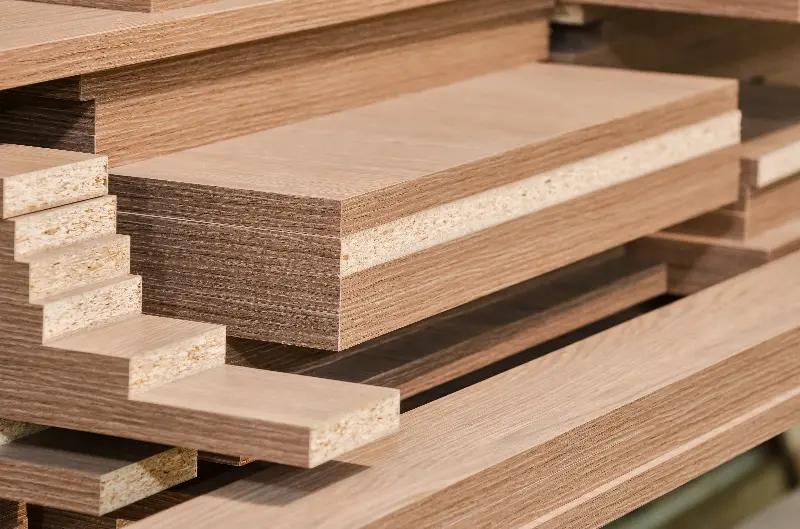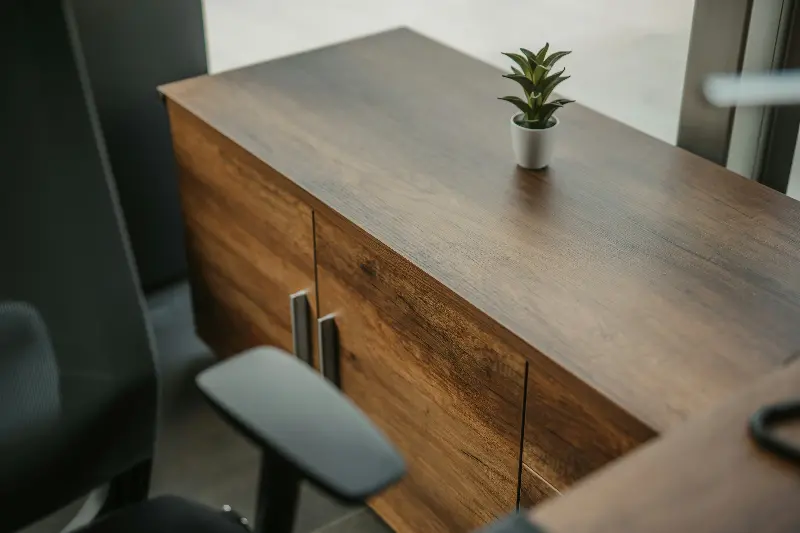
When it comes to investing in new furniture, one of the biggest questions buyers face is whether to choose natural wood or engineered wood. Both materials have unique advantages and some important drawbacks. Understanding the differences can help you make a smart, lasting choice for your home. So, let’s explore each option for style, durability, maintenance, cost, and sustainability—while revealing a few surprises along the way.
What Makes Natural Wood Special
There’s something unmistakably charming about a piece of natural wood furniture. Whether it’s the rich shade of walnut, the warm hues of cherry, or the rustic knots in oak, each piece showcases its own personality. Natural wood is solid timber, cut directly from trees, making every table, chair, or chest of drawers truly one of a kind.
Durability is a major selling point. Natural wood furniture, when cared for properly, can last decades or even become a cherished family heirloom. Minor scratches or dents can be sanded out, maintaining that fresh, timeless look for years. Many antique wood pieces are decades or even centuries old, proving just how well natural wood endures.
Another fascinating aspect is its potential to age gracefully. Over time, exposure to light and air deepens the color and brings out new beauty—adding character, rather than wear, to your home.

The Rise Of Engineered Wood
Engineered wood, often called composite or manufactured wood, is made by binding together wood fibers, particles, or veneers with adhesives under heat and pressure. Common types include plywood, particleboard, MDF (medium-density fiberboard), and HDF (high-density fiberboard).
Engineered wood has become increasingly popular, not just for its affordability but also for its adaptability. It can mimic almost any wood grain thanks to modern veneers and laminates, offering a wide range of styles for every taste. Its uniformity ensures fewer imperfections, and it’s far less likely to warp or split compared to solid wood, making it ideal for certain climates or damp environments.
Some engineered wood products push the innovation even further. For example, marine-grade plywood and moisture-resistant MDF have found their way into kitchens and bathrooms, withstanding humidity that would challenge natural alternatives.

Investment: Upfront Cost vs. Long-Term Value
When considering your budget, engineered wood generally comes out ahead on initial price. It’s cost-effective, which makes it perfect for trendy pieces or furnishing entire rooms on a tight budget. This makes sense for families with young children or students outfitting their first apartments, where practicality beats long-term investment.
Natural wood, on the other hand, requires a higher upfront investment. However, its longevity and ability to be refinished mean you could be buying quality that lasts for generations. Consider the cost-per-year of a sturdy oak dining table you’ll hand down one day, compared with replacing lower-cost options after a few years’ wear and tear.
Interestingly, resale value is also often higher for well-maintained natural wood furniture, as there remains a strong market for vintage and antique wood pieces.
Durability And Daily Life
Durability boils down to use, environment, and maintenance. Natural wood is remarkably strong and can recover from bumps and nicks with gentle refinishing. But it does require regular care. Polishing, conditioning, and protecting from excessive heat or moisture is important to keep solid wood looking its best.
Engineered wood, particularly higher-end variations like plywood, demonstrates great resilience against warping and cracking—a point in its favor for homes with fluctuating humidity. However, it’s more vulnerable to deep scratches, and swelling or permanent damage can occur if water soaks in. Unlike solid wood, once the surface is compromised, repairs can be difficult.

Style And Versatility
Designers love the possibilities of engineered wood. From flawless modern surfaces to intricate curves in contemporary coffee tables, its flexibility in manufacturing inspires innovation. Laminate or wood-veneer finishes mean you can get the look of exotic hardwoods without the high prices—or the environmental impact.
Natural wood, with its rich grains, can’t be replicated in full. If you crave authenticity, solid wood brings depth and warmth that’s hard to imitate. Plus, no two pieces are ever exactly alike, adding a bespoke element to your space.
Sustainability And The Environment
Sustainability is increasingly important for today’s furniture buyers. Engineered wood often uses wood scraps and by-products, minimizing waste. Many manufacturers also use adhesives and processes with low emissions, and labels like FSC (Forest Stewardship Council) indicate responsible sourcing.
Natural wood furniture can also be sustainable if it comes from managed forests. Reclaimed wood is a trendy and eco-friendly option, giving new life to old beams and planks.
Final Thoughts: Making The Right Choice For Your Home
The decision between natural and engineered wood isn’t just about price—it’s about lifestyle, values, and personal taste. If you dream of handing down a beautiful, aging wooden table or crave the uniqueness of natural materials, solid wood may be your best investment. If flexibility, affordability, and cutting-edge design speak to you, engineered wood is a practical contender.
Whichever path you choose, understanding these materials means you can buy with both confidence and pride, bringing home pieces that reflect your style and life for years to come.
